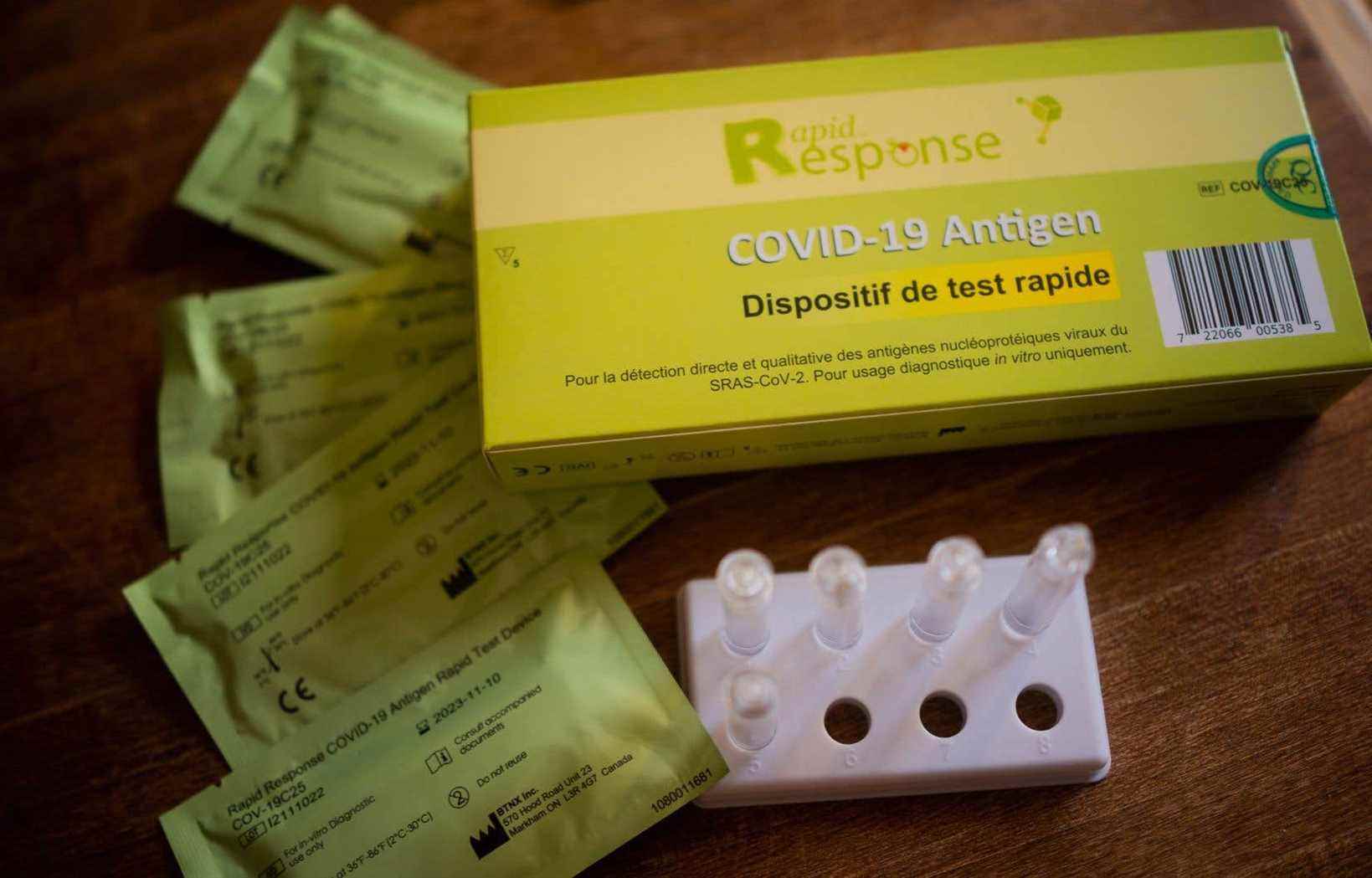Before November 2021, Quebec had never really taken steps to offer the population the option of taking screening tests themselves, despite obtaining several million tests over the year. Ottawa Rapids. The arrival of the Omicron variant set fire to the powder and precipitated his plans, to the point of almost instantly liquidating his December order.
At the turn of the year 2022, i.e. at the 22e month of the global COVID-19 pandemic, the Legault government radically changed its approach to rapid self-tests. In recent days, this small homemade screening tool has become for many the only way to confirm a virus infection. However, just a few weeks earlier, the government did not consider it necessary to distribute it to citizens. What happened ?
The duty examined data, expert reports, and interviewed government officials in an attempt to draw a timeline of the events leading up to the holiday stockout. This shows that the government of Quebec has shown reluctance with regard to self-tests. This, even if the practice is praised by some experts and has become the norm in several countries of the world for months.
The rapid test saga
Rapid tests first appeared in Quebec in October 2020. First delivered in a trickle, they ended up building up a substantial reserve over the months. According to data compiled by The duty, Quebec received approximately eight million rapid antigenic tests from October 2020 to November 2021. According to a fact sheet produced by the National Institute of Public Health of Quebec this year, these devices, branded Abbott Panbio, could only be handled by healthcare professionals.
In Quebec, the director of the vaccine campaign, Daniel Paré, has been wearing two hats since last summer. In addition to ensuring the immunization of the population, in September he took charge of the distribution of self-tests. “Before, I can tell you less about it”, he agreed in an interview with The duty last week.
Called for help to speed up the use of tests in schools, Mr. Paré began distributing them in September in certain schools. A smaller proportion also served in the health network, he assures us.
But in “October, November”, Public Health changes its tune. Quebec gets the green light so that the general population can use the self-tests. Why ? The duty asked the Department of Health and Social Services on what scientific bases this change of course was based. At the time of this writing, we still had not received a response.
“We could have made them available to the consumer more quickly,” said Caroline Quach-Thanh on the phone.
Full professor in the Department of Microbiology, Infectious Diseases and Immunology at the University of Montreal, she led from the start of 2021 a pilot project to evaluate the effectiveness of rapid screening tests in schools. In June, it presented its recommendations to Quebec. The DD Quach-Thanh admits being surprised at the government’s reaction time to the testing saga.
“The decision to start their use was taken quite late, even though we had been making representations all summer,” she observes.
The DD Quach-Thanh remembers having felt reluctance within the General Directorate of Public Health. Result: the deployment in the general population was delayed.
“I would tell you that Public Health was quite cautious,” recalls the expert, who herself bought rapid tests on the private market before Quebec began to deploy them.
“I think some people had the impression that since the test was not working properly [pour détecter certains cas], it didn’t give us much, after all. “
Omicron is changing the game
Canada’s Deputy Prime Minister Chrystia Freeland was utterly incredulous when a reporter asked her on December 14 if the order for rapid tests had not been placed a little late for the holiday season. ” Not at all. In fact, we already have a lot of rapid tests in the country, she replied. My message to provinces and territories, to health authorities across the country, is: please use and distribute the rapid tests we have already sent you. “
Less than ten days later, and despite the arrival of 11.2 million additional rapid self-tests in December, Quebec found itself in the grip of a complete shortage of rapid tests throughout its territory.
Roxane Borgès Da Silva has been hitting the nail on the head with rapid tests for over a year. In his eyes, too, the response was too timid. “I think Public Health ignored this tool. Finally, they find themselves having to face an explosive situation, ”she says.
This “explosive situation” is Omicron. Since the end of November, Quebec has had to deal with the most contagious variant of COVID-19 it has had to face to date. And yet, in recent days, PCR tests, used since the start of the pandemic and analyzed in the laboratory, have only been used by workers in the health and education networks. The general population must rely on self-tests… when they can get their hands on them.
Initially, the government of François Legault was working on a “transition plan”, supposed to be set in motion at the beginning of 2022. This was to lead Quebecers to adopt a strategy of self-management of cases, based on the use of tests. fast, explains Mr. Paré.
However, the arrival of the Omicron variant at the end of November changed everything. “It happened much faster than we thought, and we had to adapt,” he confides in front of his screen, at the end of another dizzying day in January.
“We were going to start slowly with certain groups – parents, younger clienteles – he recalls. It is certain that Omicron changed the slower strategy that we had. “
The Legault government expects 31.5 million rapid tests in January. If he says he lacks predictability regarding the next arrivals, Mr. Paré says he expects as many tests, if not more, in the coming months.
“There is a perception that we did not like them, the tests, he emphasizes. We love them. “
